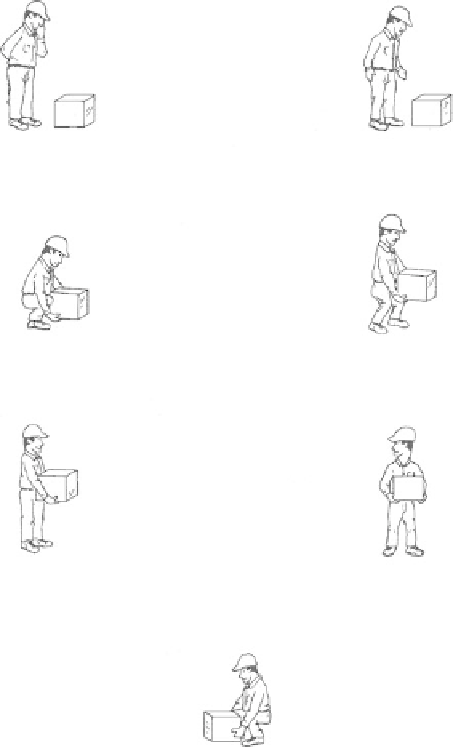Environmental Engineering Reference
In-Depth Information
A
As you approach the load determine
its weight, size and shape. Consider
your physical ability.
B
Stand close to the object with feet
8 to 12 inches apart for good balance.
D
Using both leg and back muscles lift
the load straight up. Keep the object
close to the body.
C
Bend the knees and get a firm grasp
on the object.
E
Do not twist or turn until the object
is in carrying position.
F
Rotate body by turning your feet and
make sure path of travel is clear.
G
To set the object down, use leg and
back muscles and lower the object
by bending the knees.
FIgure 23.3
Steps.in.making.a.proper.lift..(
Source:
.Courtesy.of.the.U.S..Bureau.of.Mines.)
•.
Solve.heavy.load.lifts.and.repetitive.lifts.using.lifting.devices.
•.
Use.mechanical.help.
In. summary,. workers. must. be. careful,. especially. if. they. are. overweight;. they.
should.eat.moderately.and.diet.sensibly,.exercise.to.strengthen.muscles.and.improve.
lexibility,. plan. each. lift. before. starting,. lift. naturally,. bend. the. knees,. and. let. the.
legs—not.the.back—power.the.lift.up.smoothly.(do.not.twist.while.lifting,.and.don't.
overdo.it)..Get.help.with.loads.that.are.too.heavy.or.awkward.for.one.person.to.move.
comfortably.. If. attention. is. not. paid. to. proper. lifting. and. handling,. back. injuries.
are.sure.to.follow,.as.the.back.is.the.most.common.body.part.injured.and.the.most.
frequent.type.of.occupational.injury.

